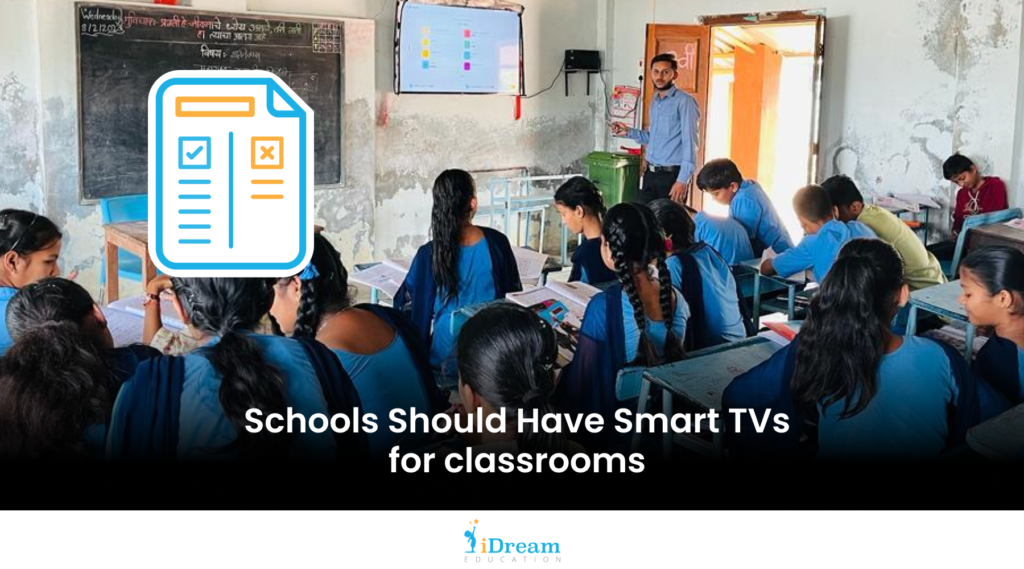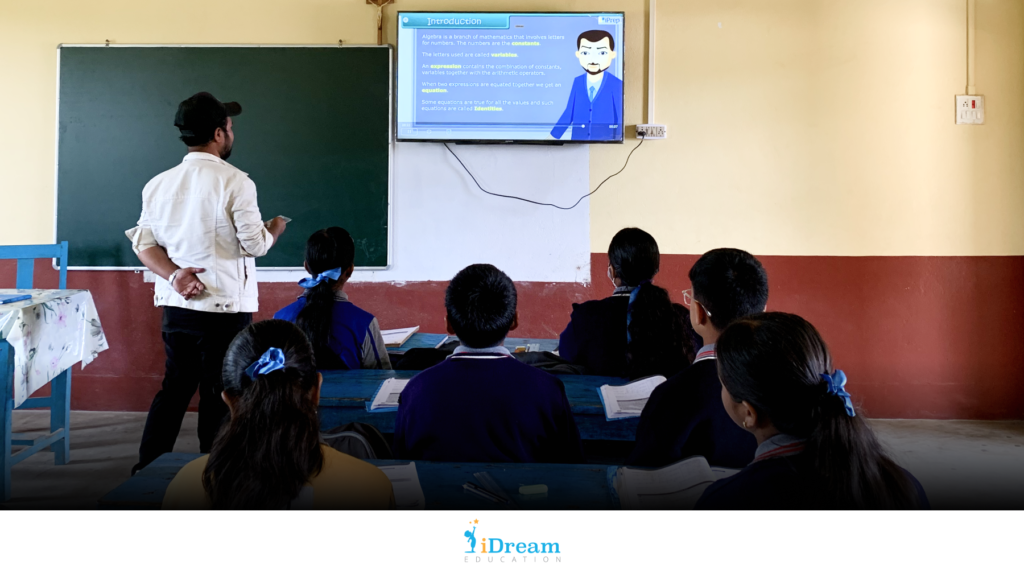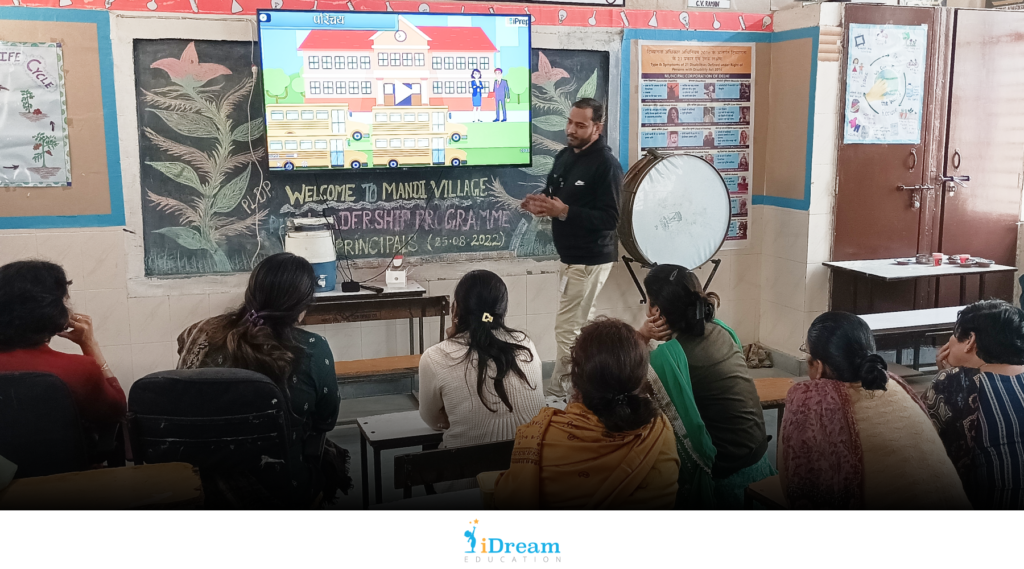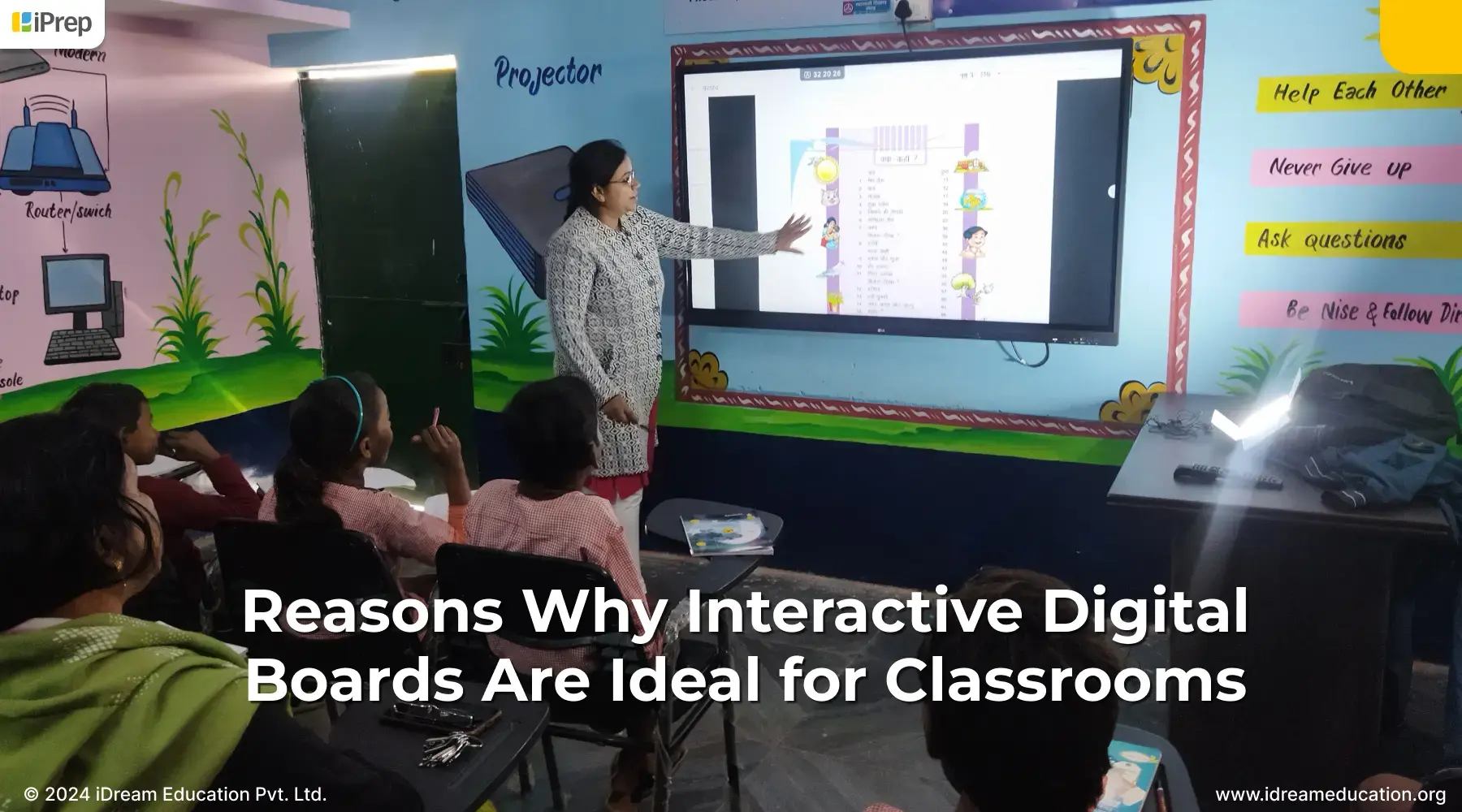Using Smart TVs For Classrooms: The Benefits and Drawbacks
Explore the Benefits and Drawbacks of Using Smart TVs For Classrooms: Is It the Future of Classroom Learning?

Imagine a high school biology class where the students are studying human anatomy. The teacher wants to use visual aids to enhance the learning experience and decides to use a smart TV to display models of the human body. With the smart TV, the teacher can easily navigate through the models, zoom in on specific organs, and explain their functions in detail.
On the other hand, a teacher with textbooks, blackboards, and chalk wants to use visual aids to show models of the human body. Then, she/he will draw a sketch of a human body on board and try to explain by pointing to different body parts with chalk. This is just one of many scenarios that can occur. This creates inequality in classrooms; students may not have access to the same technology and learning opportunities.
In this blog, we will explore the various benefits of incorporating smart TVs in classrooms. We will also discuss possible drawbacks of using Smart TVs in classrooms and ways to overcome these drawbacks: and how teachers can create engaging and effective learning environment using Smart TV’s in classrooms.
What are Smart TVs For Classrooms?
Smart TVs are a type of hardware commonly used for setting up smart classes, as they are easy to set up and manage. These devices integrate internet connectivity, powerful processors, and advanced software to provide a range of multimedia capabilities. Smart TVs are highly interactive and can be used to display educational content, facilitate virtual classes, and enable remote learning. Smart TVs are becoming increasingly popular in the EdTech industry because their compatibility of Smart TVs with learning platforms means that teachers can easily access educational content with the same convenience with which they use TV at their homes.

The Benefits of Smart TVs in Classrooms
- Versatility
Smart TVs for classrooms are becoming increasingly popular due to their versatility as digital teaching tool. Smart TVs require little to no training to use and are familiar to most teachers, as their functioning is similar to a regular television with a remote or touch. This aligns with the natural psychology of teachers using TVs in their homes, making it comfortable and accessible to integrate technology into their teaching routine.
- Interactive
Smart TVs for Classrooms are a great addition as they offer easy interactive displays and clear instructions for connecting to the internet, restarting, and resetting. With the intuitive interface of learning platforms, teachers can easily interact with content categories at the click of a button or touch, making learning more engaging and interactive. Overall, Smart TVs provide a convenient and efficient way to deliver educational content and improve classroom productivity.
- Access a wide range of resources
Smart TVs have changed the way we consume media and access digital resources. With the ability to work as both a TV and a digital classroom, smart TVs provide users with a wide range of resources, from animated videos to digital syllabus books to progress tracking, switch platforms, and more. This makes smart TVs an ideal choice for both entertainment and education.
- Easy to Use & Maintain
Smart TVs are a popular choice for classroom technology as they are easy to use and maintain. They are lightweight, making them easy to move around and set up anywhere. Setting up a Smart TV is a hassle-free process that requires just one stand and four screws, and once connected to a power source, it can be used right away. These features make Smart TVs a convenient and accessible option for setting up the digital classroom in the remotest region.
- Large display
Smart TVs offer a large display that provides clear and vivid images, which are beneficial for students sitting in the back rows of a classroom or lecture hall. With their high-resolution screens, Smart TVs can help ensure that students can see the content clearly, even from a distance.
- Improved student engagement
Learning on Smart TVs in classrooms can greatly improve student engagement by allowing them to learn through a variety of engaging visuals, such as animated videos, project videos, digital books, practice exercises, and more.
- Increased interaction in the classrooms
Integrating smart TVs in the classroom has the potential to increase teacher-student interaction. With smart TVs, teachers can display interactive content such as video lessons, project videos, books, and more to engage students and foster active participation. Furthermore, real-time feedback on practice enhances classroom communication and creates a more dynamic learning experience. As a result, smart TVs can help bridge the gap between teacher and student, enabling more effective and collaborative learning.

Overcoming Possible Drawbacks of Using Smart TV’s in Classrooms
- Internet connectivity
Smart TVs have transformed the way we watch television, but their accessibility depends on a stable internet connection, making them difficult to use in areas with poor connectivity. However, Smart TVs can still be used in classrooms if the learning platform allows users to access offline content. One example of this is the iPrep Digital class solution that uses Smart TVs. Content can be accessed using a pendrive plugged into the smart TV. Such solutions are valuable in regions with no limited internet connectivity.
- Lack of technical expertise
While it’s true that Smart TVs can be intimidating to use for those without technical expertise, with intuitive interfaces and offline digital content, they can be easily used in an educational setting. With the simple plug-and-play approach of inserting a pendrive with the desired content, teachers can easily incorporate Smart TVs into their lessons without requiring any specific technical expertise.
Why should schools have smart TVs for classrooms?
Smart TVs are an affordable and accessible digital teaching solution for classrooms. They also align with the natural psychology of teachers to use TVs in their homes, which eliminates technological resistance among teachers. Additionally, using smart TVs can perfectly engage students in class and make the classroom more interactive.
If in case you would like to know more about our digital learning solutions, contact us at +91 9501110665 or write to us at share@idreameducation.org







